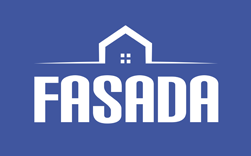Przedsiębiorstwo Robót Elewcyjnych Fasada sp.zoo
Poland
Integration of digital technologies is attractive for the public investors; however it is very challenging to implement it in the renovation market due to initial high investment and purchase costs. FASADA has performed pilot projects that included creating of the as-built documentation based on the 3D scanning, energy analysis based on Building Energy Model and BIM modelling.

About
Fasada is a construction SME company established in 1992. The company is active in retrofitting and construction of new buildings. Fasada provides services for real estate investors, public authorities, building administrators and individual clients.
Company size: Micro (<10)
Sector: Construction of buildings; Renovation
Technology: Building information modelling; 3D scanning
Digital initiative
The P2ENDURE project (grant no 723391) promoted evidence-based innovative solutions for deep renovation based on prefabricated Plug-and-Play systems in combination with on-site robotic 3D-printing and Building Information Modeling (BIM), demonstrated and monitored at 10 real projects in 4 geo-clusters with EU-wide replication potential. Research activities focused on: 1) Building further on credible state-of-the-art solutions of 3D scanning and printing technologies in combination with prefab renovation systems; 2) Development modular processes for deep renovation through BIM-based design, engineering, production and installation; 3) Optimisation and integration the state-of-the-art solutions grounded in practical evidence of their performance through real deep renovation cases of public and residential buildings; 4) Performance real deep renovation projects at a higher complexity level and with a larger performance impact than typical residential buildings.
Relevant construction projects
Design and renovation of kindergarten no 16 in Gdynia (pilot building under the P2ENDURE project). The performed works included: 3D laser scanning, cloud point, creation of BIM model, 4D & 5D analysis (time and cost analysis), creation of Building Energy Model, energy analysis, monitoring of the indoor air quality before and after renovation with the device “comfort eye”.
Experienced benefits of digitalisation
The building subjected to renovation had only paper documentation that was not up to date (this is a problem of many buildings that need to be renovated), therefore there was a need of doing an as built building survey. We contacted a local company doing 3D laser scanning and ordered the cloud point (XYZ format). Based on the cloud point we created digital documentation of the building (also 2D drawings and BIM model), in that way we identified the actual building condition (with high level of accuracy) and recreated accurate digital building documentation. The process was quite fast. Thereafter, we proceeded with renovation design and energy simulations, for which we used Cypetherm in combination with software and BIM-to-BEM approach. We also conducted an energy audit. After the successful implementation of the first case we are repeating this process for another building, where we ordered laser scanning and based on that will develop a BIM model.
Tips for effective implementation
The construction sector is dominated by the cost criteria and all construction SMEs try to minimise their cost as much as they can. Moreover, BIM is more attractive to investors and large companies rather than SMEs, which often lack blue-collar workers. Due to that, it is very difficult to introduce the often expensive BIM software and tools. It is easier to introduce BIM and digitalisation on the large construction sites with large budget. There are also the problems of the interoperability of tools and the need for additional training for the personnel that need to be addressed
